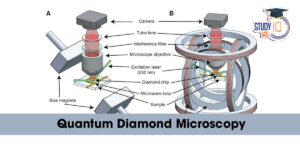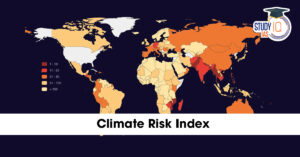Table of Contents
The State of the Cryosphere 2025 report, released ahead of COP30 in Belém, Brazil, presents one of the starkest scientific warnings yet about Earth’s frozen regions. Coordinated by the International Cryosphere Climate Initiative (ICCI) and reviewed by over 50 leading scientists, the report shows that glaciers, ice sheets, sea ice, snow cover and permafrost are all shrinking at accelerated, dangerous rates. These changes, the report warns, will have consequences lasting centuries to millennia, even if global warming halts today.
What is the Cryosphere?
The cryosphere refers to all frozen components of the Earth system, including:
-
Himalayan glaciers
-
Polar ice sheets
-
Sea ice
-
Snow cover
-
Permafrost
-
Polar oceans
The cryosphere acts as Earth’s “cooling shield,” regulating sea levels, water flows, weather patterns and ocean currents. Its rapid decline signals severe and long-lasting climate instability.
Major Findings of the State of the Cryosphere 2025 Report
1. Ice Loss Is Accelerating Across the Planet
Ice sheets and glaciers are melting faster than earlier predictions.
-
Stability thresholds for Greenland and Antarctica lie near ~1°C of warming.
-
Many mountain glaciers are vulnerable at even lower temperatures.
-
Current warming (~1.2°C) is already too high to maintain long-term ice stability.
Scientist’s Warning:
“Preserving the Earth’s cryosphere now means reaching 1.5°C by 2100 and lowering temperatures toward 1°C thereafter,” said Dr. James Kirkham, ICCI Chief Scientist.
2. Current Global Pledges Will Lead to >2°C Warming
The report states that:
-
Current national pledges are insufficient
-
Warming of 2°C or more would cause irreversible melting
-
This would push sea-level rise beyond the limits many coasts can adapt to
Only front-loaded emission cuts, plus sustainable land-based carbon removal, can keep warming below 1.5°C this century.
3. Ocean Currents Are Slowing Due to Ice Melt
Freshwater from melting ice sheets, combined with warming oceans, is weakening key circulation systems.
Consequences include:
-
Slowdown of the Atlantic Meridional Overturning Circulation (AMOC)
-
Possible cooling in parts of Northern Europe
-
Regional sea-level rise
-
Long-term damage to marine ecosystems
-
Ocean disruptions lasting hundreds to thousands of years
Polar oceans are also acidifying faster than warmer waters, threatening shell-forming species with “non-survivable” conditions.
4. Permafrost Has Turned Into a Net Carbon Source
The report confirms that permafrost now releases more greenhouse gases than it absorbs.
This is alarming because:
-
Permafrost stores twice as much carbon as the atmosphere
-
Thawing releases CO₂ and methane, intensifying warming
-
Delays in climate action will dramatically increase mitigation costs
5. Record-Low Sea Ice and Glacier Melt
Key observations include:
-
Combined Arctic–Antarctic sea ice reached record lows in February 2025
-
Glaciers outside Greenland & Antarctica lost ~273 billion tonnes annually since 2000
-
Melt rate between 2012–23 was 36% faster than 2000–11
-
Europe’s Alps saw 4.6 m surface lowering at Konkordiaplatz in 2025
Impacts on India: A Dual Crisis
India faces a two-sided climate threat: long-term sea-level rise and immediate Himalayan water instability.
1. Rising Seas Threaten India’s Major Cities
Even if global temperatures stabilize:
-
Mumbai
-
Kochi
-
Kolkata
-
Sundarbans
will experience increasing coastal flooding due to locked-in sea-level rise.
2. Himalayan Glacier Decline Is Destabilizing Water Security
The Himalayas are warming faster than the global average, intensifying:
-
Rain-on-snow flash floods
-
Glacial Lake Outburst Floods (GLOFs)
-
Erratic monsoon patterns
-
Dry-season water shortages in the Ganga, Brahmaputra, and Indus basins
Glacier Mass Remaining by 2100
| Region | At 1.5°C Warming | At 3°C Warming |
|---|---|---|
| Western Himalaya–Karakoram–Hindu Kush | ~85% | ~30% |
| Central/Eastern Himalaya | ~40% | ~15% |
Black Carbon: India’s Most Immediate Solution
Black carbon (soot) from:
-
Household stoves
-
Brick kilns
-
Diesel engines
-
Crop burning
settles on snow and ice, reducing reflectivity and accelerating Himalayan melt.
Why it matters:
-
Unlike CO₂, black carbon remains in the atmosphere for days to weeks
-
Cutting black carbon delivers rapid climate relief
-
Provides huge co-benefits: cleaner air, better health, and improved water security
A Global Security Risk
The cryosphere’s rapid decline is now seen as a global security threat, influencing food systems, economies, migration, and geopolitical stability.
The Ambition on Melting Ice (AMI) high-level group—led by Chile and Iceland—calls for:
-
Immediate action
-
Higher ambition at COP30
-
Scientific integration in climate negotiations
Scientists emphasize:
Ice loss is not a regional concern; it is a planetary emergency.
Conclusion
The State of the Cryosphere 2025 report sends a clear and urgent message:
The world must cut emissions faster and deeper than ever before to protect Earth’s frozen regions.
Without immediate action:
-
Sea levels will rise for centuries
-
Ocean currents will shift
-
Himalayan water systems will destabilize
-
Climate damages will escalate globally
Protecting the cryosphere is essential for securing the future of coastal cities, water resources, oceans, and global stability.


 Quantum Diamond Microscopy: Principle, W...
Quantum Diamond Microscopy: Principle, W...
 Climate Risk Index (CRI): Meaning, Metho...
Climate Risk Index (CRI): Meaning, Metho...
 Booker Prize 2025: David Szalay Wins for...
Booker Prize 2025: David Szalay Wins for...

























